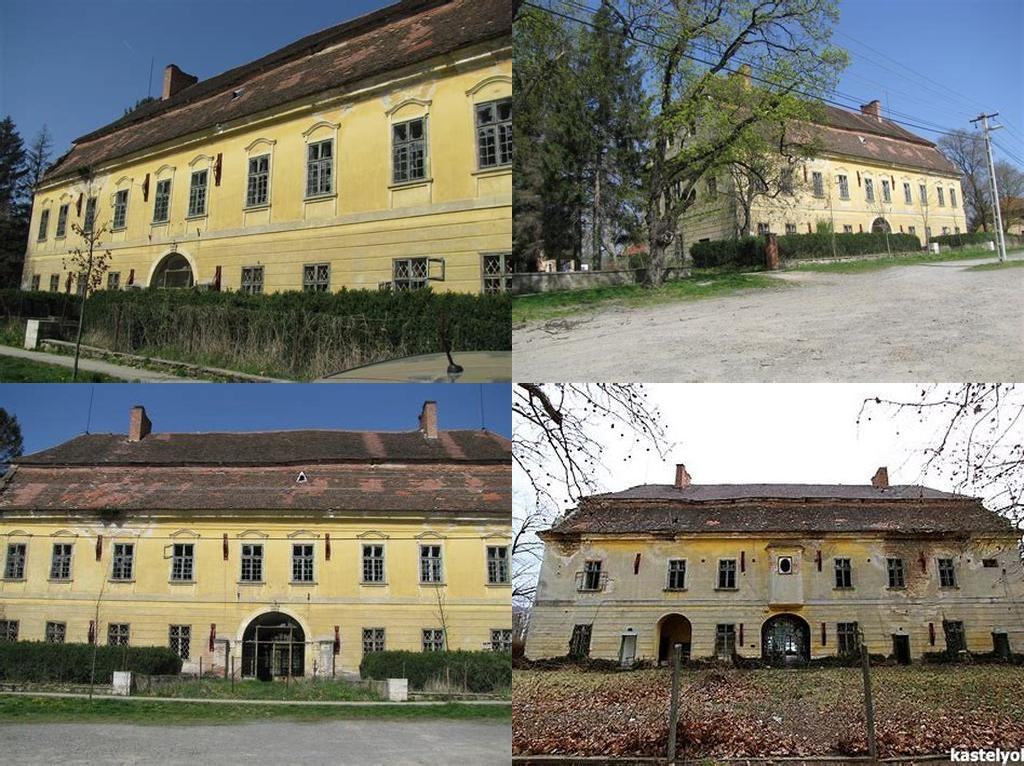
Püspöki kastély in the small town of Mecseknádasd is one of those places that feels almost like a secret you stumble upon, half-hidden by the thick woodlands of Southern Hungary’s Mecsek Mountains. Tucked at the end of a gently curving street, framed by leafy chestnut trees and the odd chorus of songbirds, it’s easy to pass it by if you’re not looking. But step through the gates, and you find yourself whisked into a world where history lingers in every odd angle and worn stone.
Let’s pull back the veil a little. The so-called Bishop’s Palace started life in the 18th century—the year 1789 is usually bandied about, just as revolution was sweeping through France, a very different kind of change was echoing in the rolling hills of Baranya county. Back then, György Klimó, the Bishop of Pécs, was looking for somewhere tranquil and, frankly, grand enough to serve as a summer retreat for himself and his episcopal successors. How’s that for extravagant holiday plans? The choice of Mecseknádasd might seem curious, but even today, the area’s restorative calm makes you understand the bishop’s vision.
What stands today is unmistakably baroque, though with a kind of country restraint. The kastély doesn’t flaunt itself—no gilded staircases or endless mirrored ballrooms here, just broad, hushed rooms with whitewashed walls, wood-beam ceilings, and fireplaces that seem made for stormy afternoons with a good book. The carved stone window frames and the dignified (if slightly stern) main entrance speak of an era when style avoided ostentation for measured elegance. Wander from room to room, and you’ll catch glimpses of faded wall paintings and beautifully aging wooden floors—the building wears its centuries with a certain, almost shy pride.
Outside, the garden is a rambling patchwork where neat 18th-century design has slowly given way to a more natural wildness. Stone steps lead up to what was once a perfectly manicured terrace, now softened around the edges by moss and wildflowers. There’s a sense of freedom here that’s rare in more “perfect” palace grounds—children run among the old fruit trees, the air buzzing with bees, and every so often, a local will tip their cap as they wander past with a basket of foraged mushrooms or plums. The connection to the landscape is palpable, and sitting under the generous shade of a linden tree, you can imagine Bishop Klimó himself indulging in a quiet afternoon nap or plotting his next ambitious project. 🏰 The way the hills rise and fall, dotted with vineyards and forests, adds a softly dramatic backdrop to the whole experience.
Inside, the palace now serves more as a cultural nerve center than a private retreat. From spring through late autumn, a steady stream of visitors comes for concerts, exhibitions, and small festivals that celebrate both the Hungarian and German heritage of the village. The wood-paneled chapel hosts intimate choral recitals, while the vaulted cellars—once home to barrels of wine destined for the bishop’s table—periodically convert into galleries or event spaces. It feels like a space where the past and present rub shoulders, each more interesting because of the other.
But part of the palace’s charm is that it never quite loses its sense of calm seclusion. Even on a busy weekend, you’re just as likely to find yourself wandering alone through the echoing halls as you are to bump into other explorers. There’s no strict formality here—just a gentle, ongoing conversation between eras. Stumble across the tiny library, and you’ll discover beautifully bound editions of Latin texts and Hungarian poetry, left open as if waiting for someone to pick up the thread. In the attic, beams glow golden in the late afternoon sun, and you half expect to find dusty trunks filled with the forgotten treasures of long-ago bishops.
So when you find yourself in the Mecsek region—perhaps hiking, perhaps seeking some quiet away from the bustle of Pécs—make time for a slow afternoon at the Püspöki kastély. Here, history isn’t packaged or rehearsed; it’s just quietly present, inviting you to linger. And if you listen closely, you can almost hear the echo of horse hooves on cobblestones, laughter in the walled garden, and the distant peal of a chapel bell rolling down the hills.





